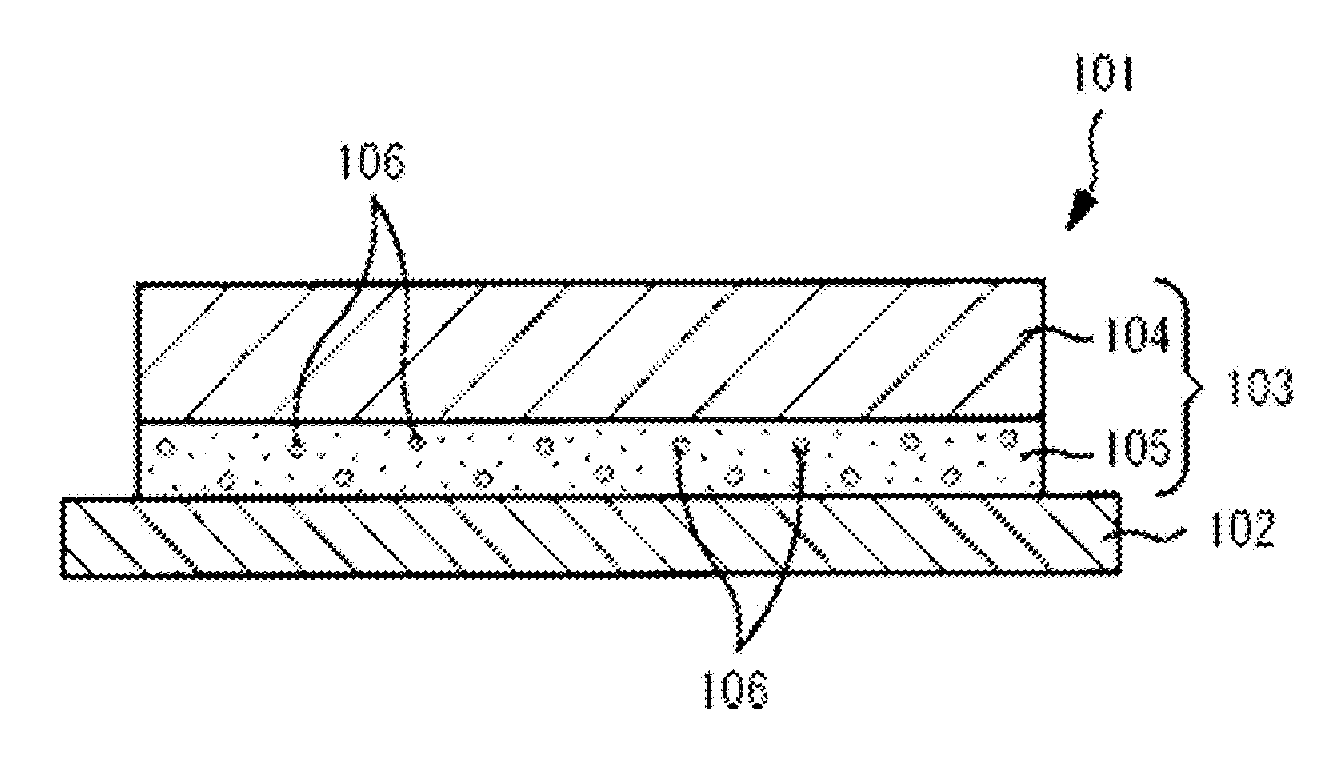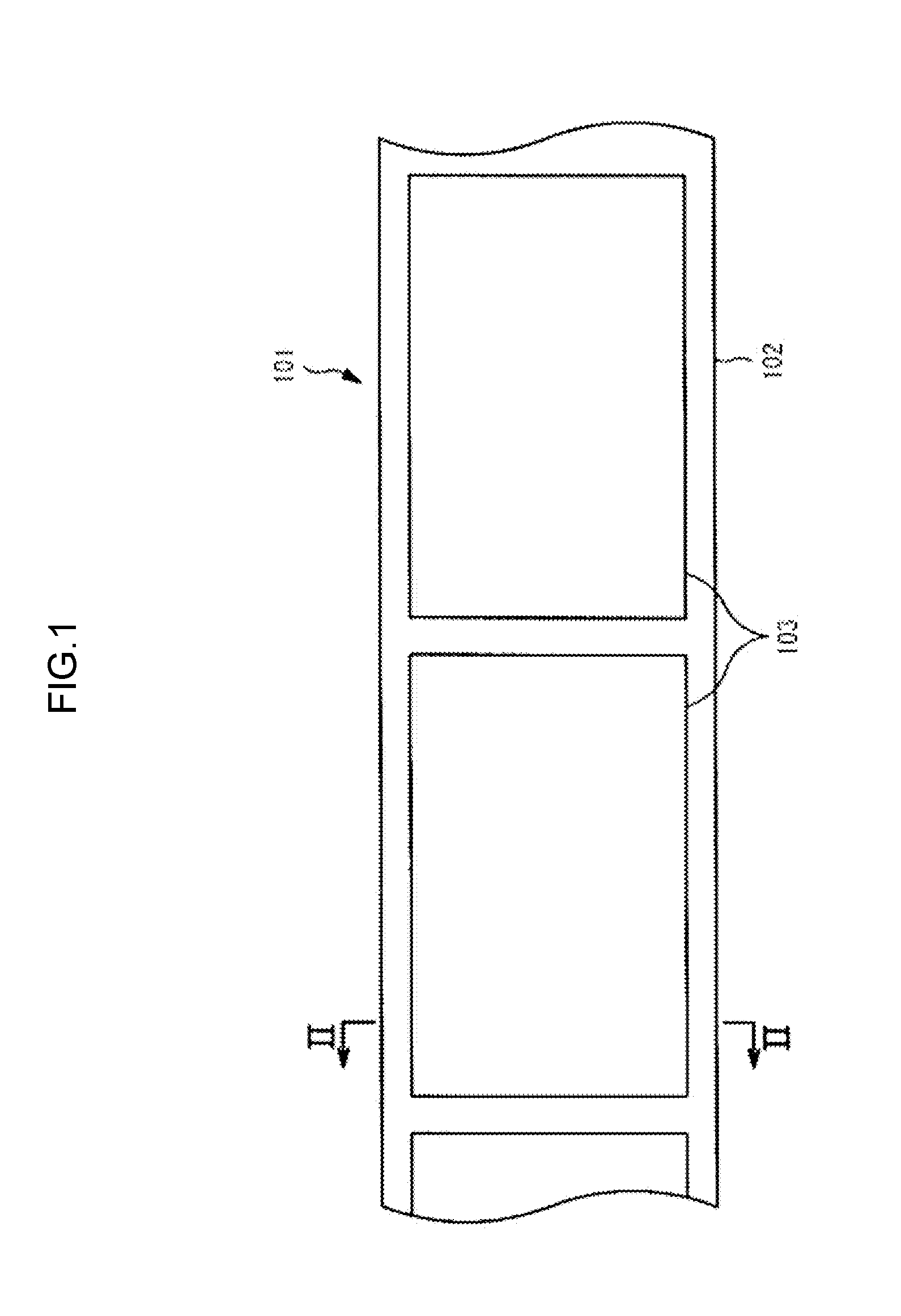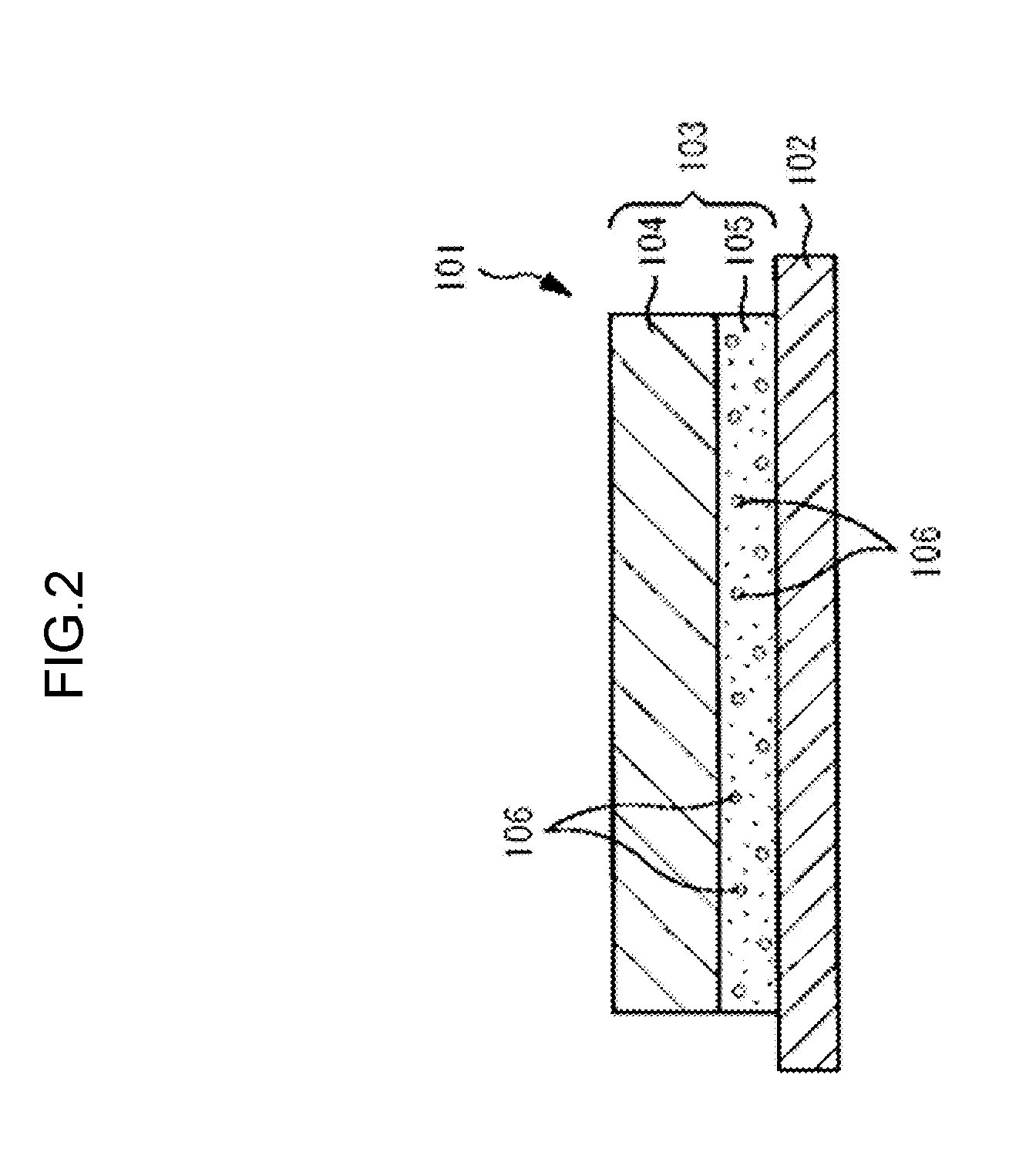Label, printing paper top layer formation material, information-bearing medium, wristband clip, and carbon dioxide reduction method using same
a technology of information-bearing medium and printing paper, which is applied in the direction of hydrogen sulfide, film/foil adhesive, synthetic resin layered products, etc., can solve the problems of reducing the production efficiency of carbon dioxide. , the effect of reducing carbon dioxid
- Summary
- Abstract
- Description
- Claims
- Application Information
AI Technical Summary
Benefits of technology
Problems solved by technology
Method used
Image
Examples
first embodiment to fourth embodiment
[0159]According to the present invention, since a carbon dioxide absorbent is added to or laminated on a material such as a label substrate, an adhesive layer or a backing paper, there have been realized a label in which the carbon dioxide absorbent can absorb carbon dioxide not only at the time of incinerating the label alone but also at the time of incinerating the label together with various objects of pasting used therewith to thereby contribute to reduction in carbon dioxide, and a carbon dioxide reduction method using this.
[0160]Then, a label 101 according to a first embodiment of the present invention and a carbon dioxide reduction method using this are described based on FIG. 1 to FIG. 3.
[0161]FIG. 1 is a plan view of a label configured as a continuous label, and FIG. 2 is an enlarged cross-sectional view taken along line II-II of FIG. 1.
[0162]The label 101 has a band-shaped backing paper 102, and a plurality of label strips 103 temporarily attached to the backing paper 102....
fifth embodiment to seventh embodiment
[0186]According to the present invention, since a carbon dioxide absorbent is added to or laminated on a top layer material formed on a printing medium, the carbon dioxide absorbent can absorb carbon dioxide not only at the time of incinerating the top layer formation material (top layer material) alone but also at the time of incinerating the top layer formation material together with various printing medium or objects of attaching (objects of pasting) used therewith. Thus, a top layer material formed on a printing medium which can contribute to reduction in carbon dioxide and a carbon dioxide reduction method using the top layer material formed on a printing medium are realized.
[0187]Then, a top layer material formed on a printing medium according to a fifth embodiment of the present invention and a carbon dioxide reduction method using this are described based on FIG. 8 to FIG. 11.
[0188]FIG. 8 is a perspective view of an ink ribbon (thermal transfer ink ribbon 1) configured as a ...
eighth embodiment to eleventh embodiment
[0238]According to the present invention, since a carbon dioxide absorbent is added to or laminated on an information-bearing medium, not only at the time of incinerating the information-bearing medium alone but also at the time of incinerating the information-bearing medium together with various objects of attaching (objects of pasting) used therewith, the carbon dioxide absorbent can absorb carbon dioxide. Thus, information-bearing medium which contribute to reduction in carbon dioxide, and a carbon dioxide reduction method using this are realized.
[0239]Then, an information-bearing medium according to an eighth embodiment of the present invention and a carbon dioxide reduction method using this are described based on FIG. 17 to FIG. 19.
[0240]FIG. 17 is a plan view of a tag as an information-bearing medium, and FIG. 18 is a schematic side view of a printer (thermal printer) to which a tag is loaded for printing.
[0241]A tag 301 has a medium body 303 formed from a paper material or a...
PUM
 Login to View More
Login to View More Abstract
Description
Claims
Application Information
 Login to View More
Login to View More - R&D
- Intellectual Property
- Life Sciences
- Materials
- Tech Scout
- Unparalleled Data Quality
- Higher Quality Content
- 60% Fewer Hallucinations
Browse by: Latest US Patents, China's latest patents, Technical Efficacy Thesaurus, Application Domain, Technology Topic, Popular Technical Reports.
© 2025 PatSnap. All rights reserved.Legal|Privacy policy|Modern Slavery Act Transparency Statement|Sitemap|About US| Contact US: help@patsnap.com



